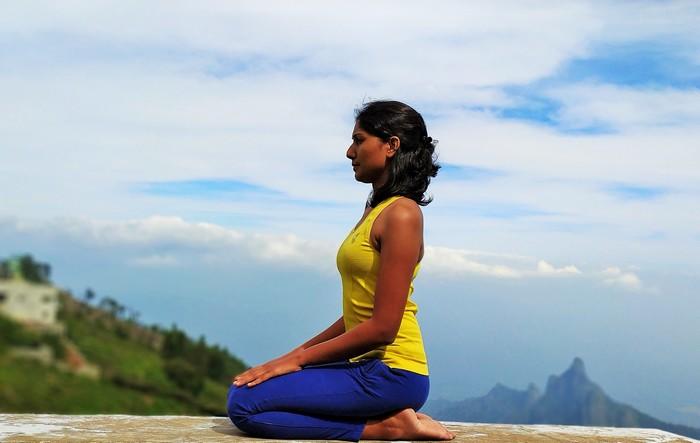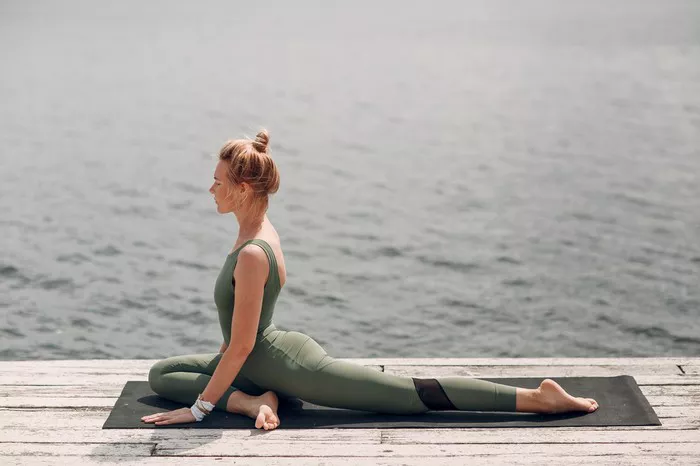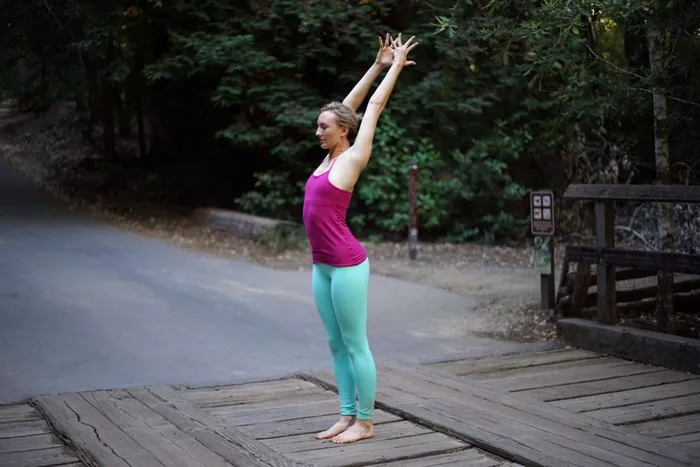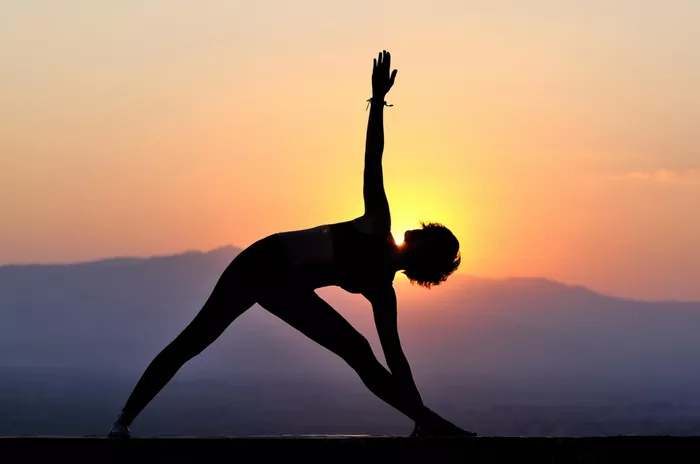A tight lower back can be incredibly frustrating. Whether it’s from prolonged sitting, poor posture, heavy lifting, or even stress, lower back discomfort is a common problem for many people. It can interfere with daily activities, making simple movements like bending, walking, or even sleeping uncomfortable.The yoga, a practice that promotes flexibility, strength, and mindfulness, offers an effective and natural solution to ease lower back tension.
In this article, we will explore the best yoga poses to help relieve tightness in the lower back. These poses can be practiced at home or in a class setting, and they are designed to improve flexibility, strengthen the muscles that support the spine, and promote relaxation. We’ll look at each pose in detail, explaining how it helps, how to do it correctly, and modifications for all levels.
Understanding the Causes of Tight Lower Back
Before diving into specific yoga poses, it’s important to understand why the lower back can become tight in the first place.
Muscle Imbalance: Tightness often stems from muscle imbalances, where some muscles are overactive (tight) while others are weak and underactive. In the case of the lower back, the hip flexors, hamstrings, and glutes can contribute to tension if they are not functioning properly.
Poor Posture: Slouching or sitting for extended periods can lead to chronic tightness in the lower back. This is particularly common for people who work at desks or drive for long hours.
Stress: Emotional tension can manifest physically in the form of muscle tightness, particularly in the lower back, which often holds a lot of stress.
Injury or Overexertion: Lifting heavy objects improperly or sudden movements can strain the muscles in the lower back, leading to tightness.
Sedentary Lifestyle: Lack of physical activity can weaken the muscles that support the spine, making them more prone to stiffness and discomfort.
Now that we have a basic understanding of why the lower back tightens, let’s explore yoga poses that can address these causes and help release tension.
The Best Yoga Poses for a Tight Lower Back
1. Child’s Pose (Balasana)
Child’s Pose is one of the most soothing and restorative poses in yoga. It stretches the lower back, hips, and thighs, and is a great way to begin a practice aimed at relieving tightness in the lower back.
How to do it:
Start by kneeling on the floor with your big toes touching and knees apart.
Sit back onto your heels and slowly lower your torso down to rest on your thighs.
Extend your arms in front of you or keep them by your sides.
Breathe deeply and relax into the stretch.
Benefits:
- Gently stretches the lower back and hips.
- Helps to calm the nervous system and reduce stress.
- Relieves tension in the spine and muscles.
2. Cat-Cow Pose (Marjaryasana-Bitilasana)
The Cat-Cow pose is a dynamic, flowing movement that helps to mobilize the spine and improve flexibility. It is often done in coordination with the breath, which makes it an effective pose for relieving lower back tightness and promoting spinal health.
How to do it:
Start on your hands and knees in a tabletop position.
As you inhale, arch your back, lift your chest, and look up (Cow Pose).
As you exhale, round your spine, tuck your chin, and draw your belly button towards your spine (Cat Pose).
Repeat the flow for 5-10 rounds, moving with the breath.
Benefits:
- Increases mobility and flexibility in the spine.
- Helps to release tension in the lower back and neck.
- Improves posture by encouraging spinal alignment.
3. Downward-Facing Dog (Adho Mukha Svanasana)
Downward-Facing Dog is a classic yoga pose that stretches and strengthens multiple areas of the body, including the lower back, hamstrings, and calves. It’s an excellent pose for those experiencing tightness in the lower back, as it encourages both lengthening and strength.
How to do it:
Begin on your hands and knees in a tabletop position.
Lift your hips up and back, aiming to form an inverted V shape with your body.
Keep your hands shoulder-width apart and your feet hip-width apart.
Keep your knees slightly bent if your hamstrings are tight.
Hold for 5-10 breaths, then slowly come back to tabletop.
Benefits:
- Stretches the entire back, hamstrings, and calves.
- Strengthens the arms, shoulders, and core.
- Encourages spinal elongation, which can help relieve lower back pain.
4. Sphinx Pose (Salamba Bhujangasana)
Sphinx Pose is a gentle backbend that helps to strengthen the lower back muscles, improve posture, and stretch the spine. It’s particularly beneficial for those who spend a lot of time sitting and want to counteract the effects of a forward-hunched posture.
How to do it:
Lie on your stomach with your legs extended and your forearms on the floor.
Align your elbows directly under your shoulders and press your forearms into the ground.
Lift your chest up, extending the spine and keeping the lower back engaged.
Gaze forward or slightly up, and breathe deeply.
Benefits:
- Gently strengthens the lower back muscles.
- Opens up the chest and shoulders.
- Improves posture and spinal alignment.
5. Pigeon Pose (Eka Pada Rajakapotasana)
Pigeon Pose is an excellent stretch for the hips, glutes, and lower back. It targets the hip flexors and outer thighs, which can be tight due to prolonged sitting or standing.
How to do it:
Start in Downward-Facing Dog.
Bring your right knee forward and place it behind your right wrist, lowering your right hip toward the floor.
Extend your left leg behind you, keeping your hips square to the front.
Lower your torso toward the floor, resting your forehead on the mat if possible.
Hold for 5-10 breaths, then switch sides.
Benefits:
- Stretches the hip flexors, glutes, and lower back.
- Helps to release tension stored in the hips.
- Opens up the pelvis and improves flexibility.
6. Bridge Pose (Setu Bandhasana)
Bridge Pose is a great way to engage the glutes, hamstrings, and lower back muscles while stretching the front of the body. It helps to strengthen the muscles that support the spine and can provide relief from lower back discomfort.
How to do it:
Lie on your back with your knees bent and feet flat on the floor, hip-width apart.
Place your arms by your sides with your palms facing down.
Press into your feet and lift your hips toward the ceiling.
Keep your thighs parallel to each other and avoid letting your knees splay out.
Hold for 5-10 breaths, then lower your hips slowly.
Benefits:
- Strengthens the lower back, glutes, and core.
- Stretches the chest and hip flexors.
- Promotes spinal stability and alignment.
7. Seated Forward Fold (Paschimottanasana)
The Seated Forward Fold is an excellent pose for stretching the hamstrings and lower back. It’s a great way to release tension in the spine, especially after sitting for long periods of time.
How to do it:
Sit on the floor with your legs extended straight out in front of you.
Keep your spine tall and engage your thighs.
As you inhale, lengthen your spine; as you exhale, hinge forward at the hips and reach for your feet, ankles, or shins.
Keep your back long and avoid rounding your spine.
Benefits:
- Stretches the hamstrings, lower back, and calves.
- Improves flexibility in the spine and hips.
- Helps to reduce tension and stress.
8. Knee-to-Chest Pose (Apanasana)
Knee-to-Chest Pose is a simple, restorative pose that helps to release tension in the lower back and hips. It’s a great way to relax and alleviate discomfort in the lower spine.
How to do it:
Lie on your back with your knees bent and feet flat on the floor.
Hug your knees toward your chest, holding them with your hands.
Gently rock side to side to massage the lower back.
Hold for 5-10 breaths, then release.
Benefits:
- Relieves lower back tension.
- Stretches the glutes, lower back, and hips.
- Provides gentle spinal decompression.
Additional Tips for Relieving Tight Lower Back with Yoga
1. Focus on Alignment
Proper alignment is essential when practicing yoga to avoid straining the lower back. Always pay attention to your body’s position and listen to its cues. If a pose feels too intense, modify it or use props like blocks or straps for support.
2. Don’t Overdo It
If you’re new to yoga or experiencing significant lower back pain, it’s important to start slowly. Gradually increase the duration and intensity of your practice as your body becomes more comfortable with the movements.
3. Breathe Deeply
Yoga is not just about physical poses—it’s also about breath awareness. Deep, steady breathing helps to relax the nervous system and reduce tension in the body. Focus on slow, diaphragmatic breathing throughout your practice.
4. Incorporate Core Strengthening
A strong core can help support the lower back and prevent future discomfort. Incorporate core-strengthening poses like Plank Pose and Boat Pose to improve spinal stability and reduce the likelihood of lower back strain.
5. Stay Consistent
To experience lasting relief from lower back tightness, practice yoga regularly. Aim for at least 3-4 times a week to see noticeable improvements in flexibility, strength, and overall well-being.
See Also: What Are the Different Types of Yoga Asanas?
Conclusion
Yoga offers a gentle yet powerful way to alleviate tightness in the lower back. By focusing on stretches that release tension, strengthen supporting muscles, and promote proper alignment, yoga can help restore balance to your body and reduce pain. Whether you’re new to yoga or a seasoned practitioner, the poses outlined in this article can be tailored to your individual needs. Remember to practice mindfully, listen to your body, and be patient as you work towards relief.
By incorporating these poses into your regular routine, you’ll not only experience greater flexibility and strength but also cultivate a sense of calm and relaxation that extends beyond your yoga mat. With time, you may find that your lower back feels more comfortable, flexible, and free from the grip of tightness.
You Might Be Interested In:




















